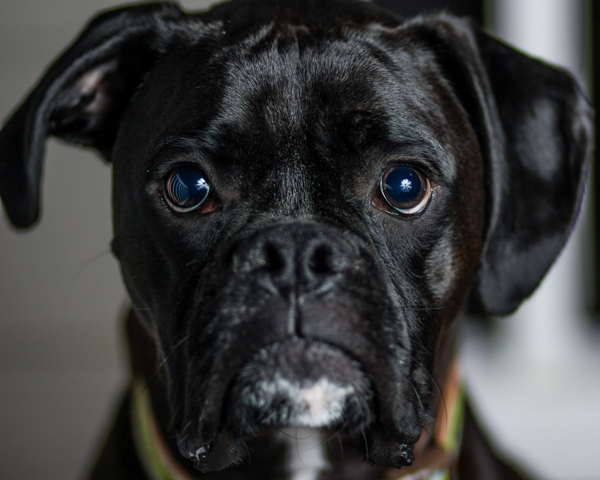A Day at the Vet: Dog Skin Cancer
 As I woke up from a late Saturday afternoon nap and made my groggy way to the living room, my boxer Mojo greeted me as usual, with big slobbery kisses and those uncontrollably happy contortions that boxers are famous for.
As I woke up from a late Saturday afternoon nap and made my groggy way to the living room, my boxer Mojo greeted me as usual, with big slobbery kisses and those uncontrollably happy contortions that boxers are famous for.
But as I scratched behind Mojo’s ears and under his chin, I felt a strange hard lump right under his jawline, under his oversized boxer lips. The lump was very hard, about the size of a pea, raised above the skin and red in appearance. Rather scary, I might add.
Of course, this being Saturday evening, and non-emergency vet clinics closed until Monday morning, I did what I think most other bloggers and internet junkies would do – I rushed online. Through multiple forums, social media advice and (most probably under-credible) pet wellness sites, I came to the conclusion that Mojo had either an abscess, a benign histiocytoma, or an (unspoken) cancerous growth.
I waited rather excruciatingly until Monday morning to visit a veterinarian clinic in Durham NC (unfortunately I wasn’t at home with my familiar vet in Baton Rouge, LA).
“If you weren’t already aware, boxers are prone to a cancerous growth known as a mast cell tumor,” the vet said almost immediately after a brief examination of Mojo. “It’s good practice to investigate any bump or lump that shows up on a boxer.”
I’m trying to keep my spirits up, but this isn’t exactly good news. As it happens, mast cell tumors are the most common form of malignant skin cancer in dogs, and some breeds, including boxers, are predisposed to developing these tumors. The vet proceeds to stick a fine needle into the lump under Mojo’s chin, in order to confirm whether the lump is some type of infection or abnormal cell growth.
“Mast cells have a very definitive appearance,” the vet said. “Mast cells will stain bright purple in a cytology test.”
The vet was likely referring to Wright’s Stain or a variant thereof, a technique used to differentiate between particular cell types under a light microscope based on a colored stain. The methylene blue stain, for example, intensely stains the granules in mast cells that contain histamine, a chemical involved in immune responses and allergies (which, interestingly, boxers are also prone to).
After a few minutes of peering at cells from Mojo’s lump under the microscope, the vet returned to the room to inform me that she hadn’t seen any clear indication of intense staining, and therefore could not diagnose a mast cell tumor at that time. She said that, given the fact that Mojo is a young dog (only 2 years old) she was diagnosing the lump as histiocytoma, but that I should watch for it to grow, as that could be an indication of mast cell tumor.
A histiocytoma is a benign tumor, and often regresses without treatment in a few weeks to a month or so. Unlike the aggressive and malignant growth of mast cells, a histiocytoma is a growth of a different type of immune cell in the monocyte/macrophage line originating in bone marrow, the histiocyte. Boxers are ALSO prone to this type of tumor, especially young and otherwise healthy individuals.
Most commonly histiocytomas are found in young dogs and appear as a small, solitary, hairless lump… They are most commonly found on the head, neck, ears, and limbs, and are usually less than 2.5 cm in diameter. [Wiki]
Unfortunately, my boxer has a tumorous lump on his chin. Hopefully, this growth is benign. But again, unfortunately, I have to wait for a few weeks, monitoring the lump, in order to be completely sure that this diagnosed histiocytoma isn’t actually a more aggressive and malignant type of growth.
If you are a worry-wort dog owner like me, I feel your pain if your pup has ever been afflicted by a mysterious lump or bump. These growths, although common, can crop up overnight and create sleepless nights for us humans who love our pets. The good news is that, even if Mojo has a mast cell tumor, metastases (or spread of the cancerous mast cells) of this type of tumor are rare, and surgical excision of the tumor can lead to a positive prognosis.
If you know anything else about histiocytomas, mast cell tumors, or common boxer afflictions, please let me know! I’m also curious whether there is a connection between the hyperactive immune systems of boxers (resulting in allergies, etc.) and these tumors that are common to this breed.
I have allergies myself – could I be more prone to other inflammatory diseases and cancer?

